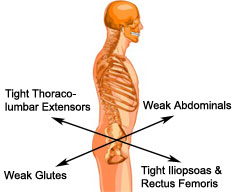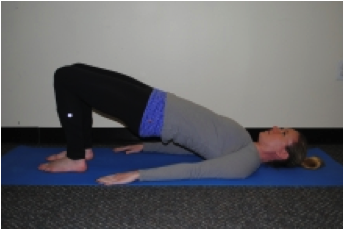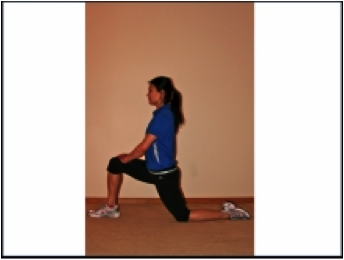
Is your golf swing hurting you?
One common phenomenon that can lead to these compensations is called Lower Crossed Syndrome. It was first established by a Czech physician named Vladimir Janda. He noticed that over time, people developed the same muscle imbalances that caused poor posture and movement mechanics.
Lower Crossed Syndrome
Lower crossed syndrome is essentially when the hip flexors and spinal extensors are facilitated or tight and the abdominals and gluteals are inhibited and firing poorly. This is very important to golfers because the abdominals and glutes are two of the most important muscle groups that need to be recruited during the swing. One exercise to begin activating your glutes and abdominals is the bridge. Start laying down on your back with your feet flat on the ground. Flatten your back to the ground, pull your abdominals up and in to engage them. Then tighten your glutes together and push through your heels to lift your hips up toward the ceiling. This is a good exercise to engage your hamstrings, glutes, and spinal stabilizers while stretching the hip flexors.

The Bridge
When your hip flexors and low back extensors are tight, it can cause poor posture when addressing the golf ball. This can cause poor posture at the top of the back swing and lead to low back pain. To stretch your right hip flexor, kneel on your left knee and gently lean forward while tilting your pelvis under yourself.

Hip Flexor Stretch
For more tips and information on how to eliminate pain while playing golf, come get a golf evaluation at ProActive Physical Therapy and Sports Medicine.

